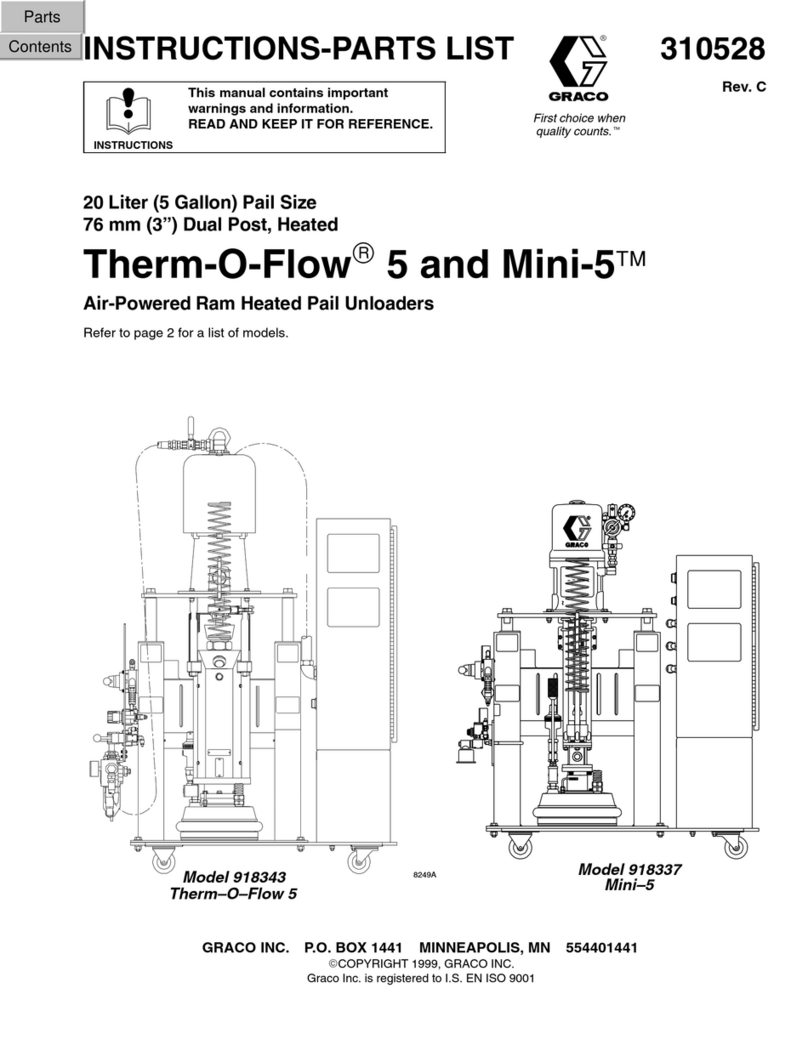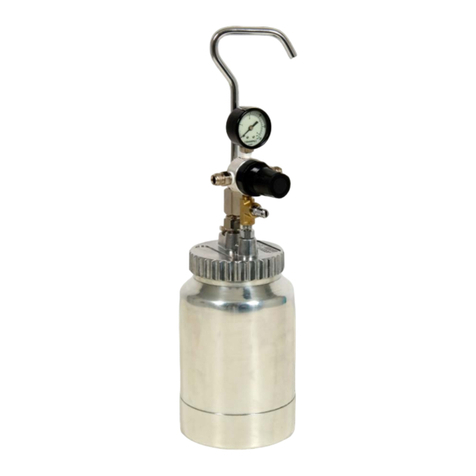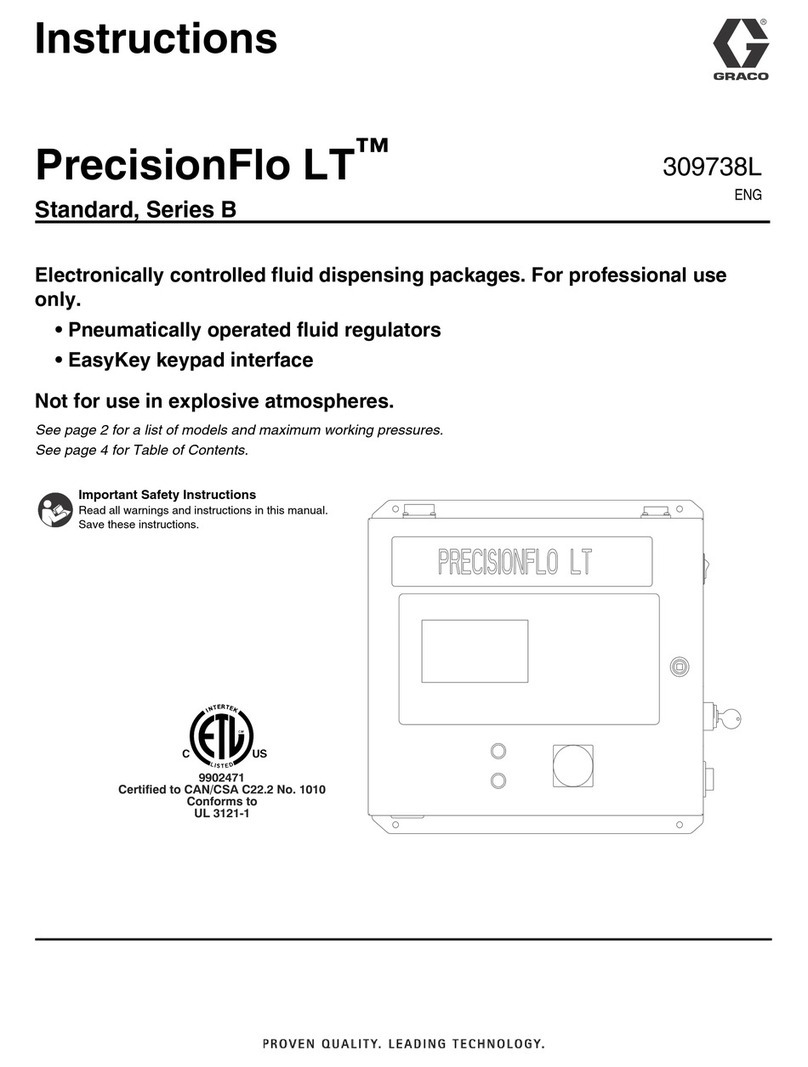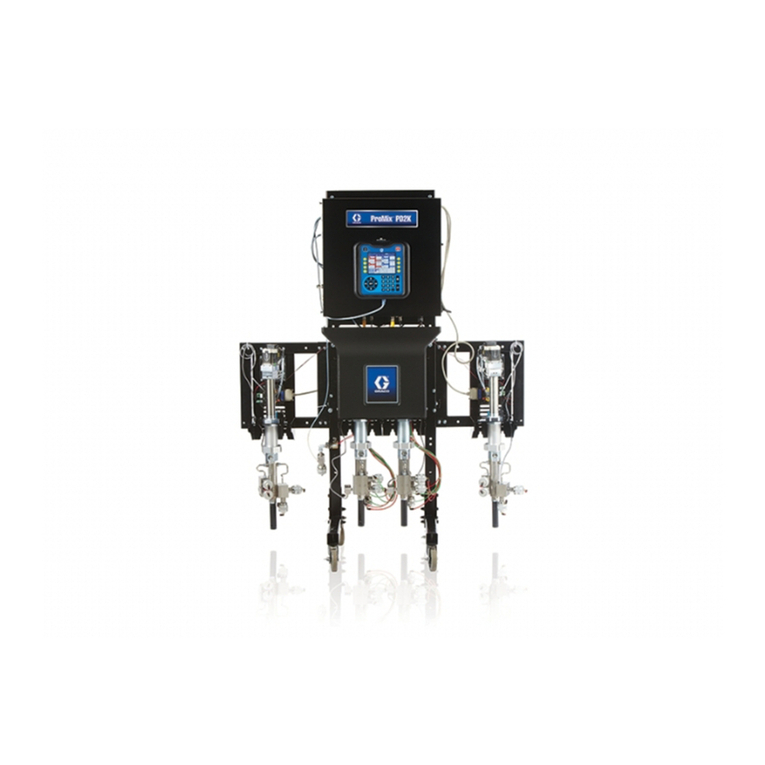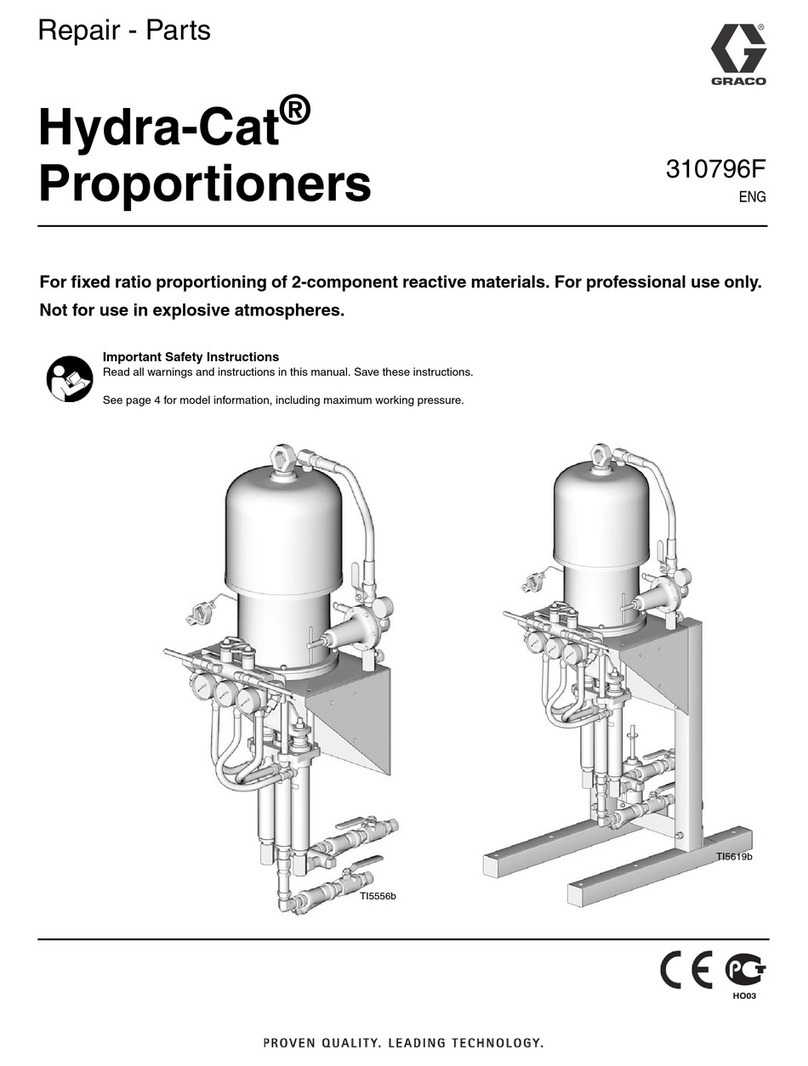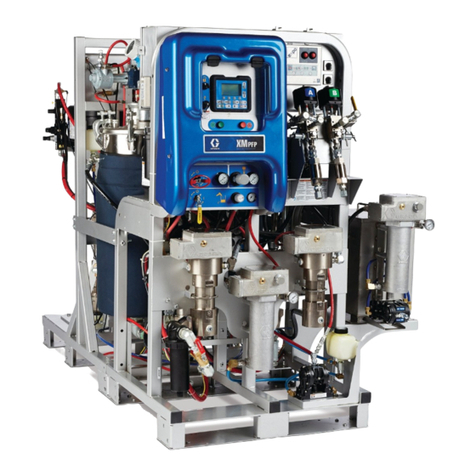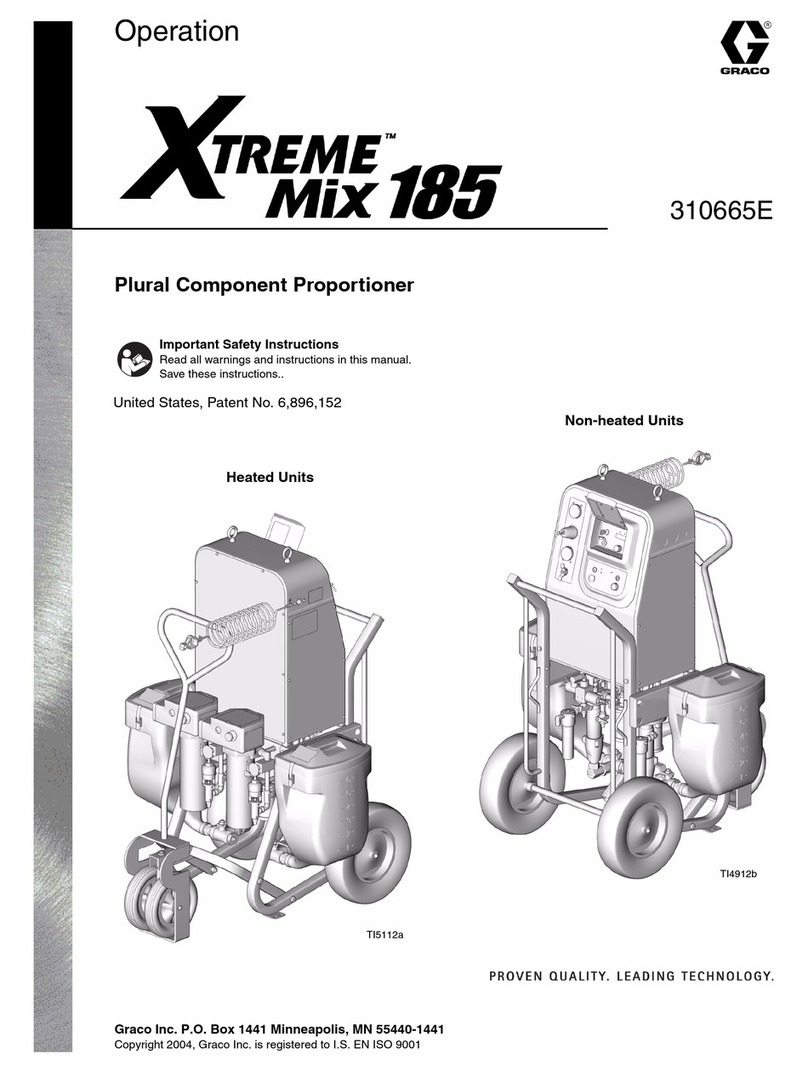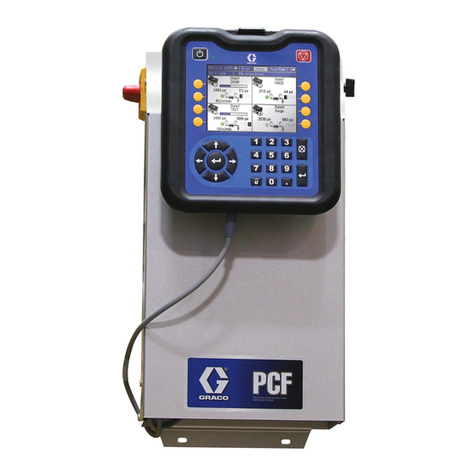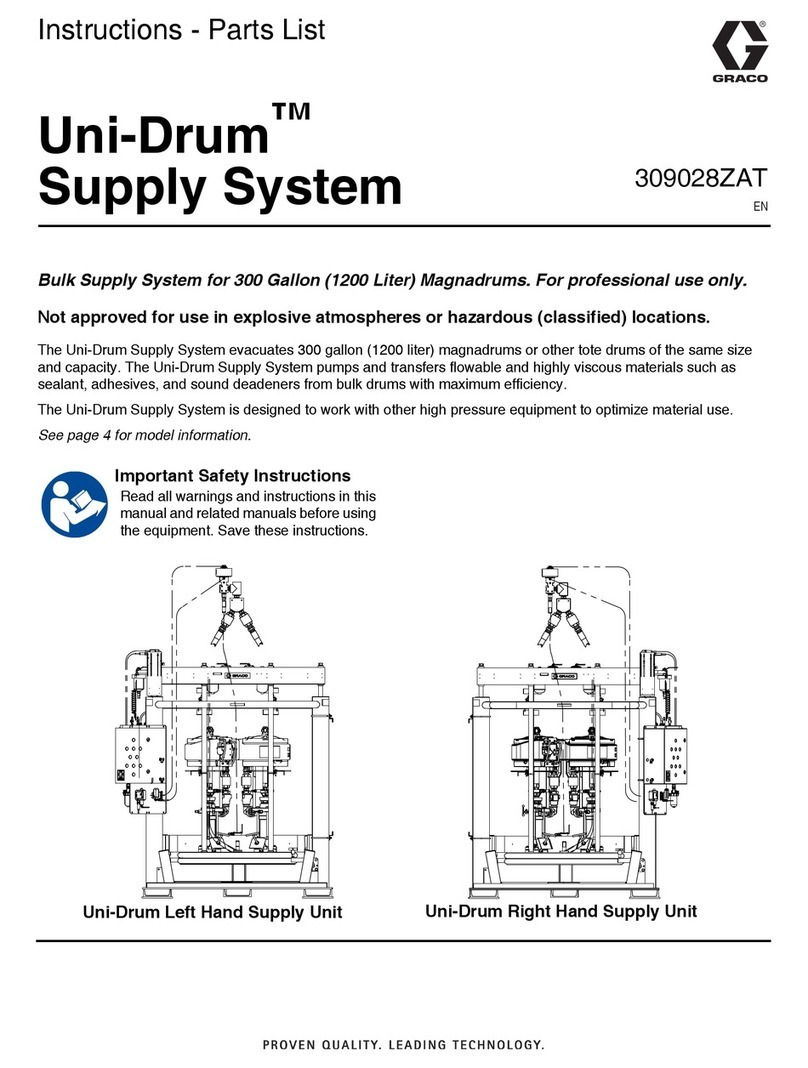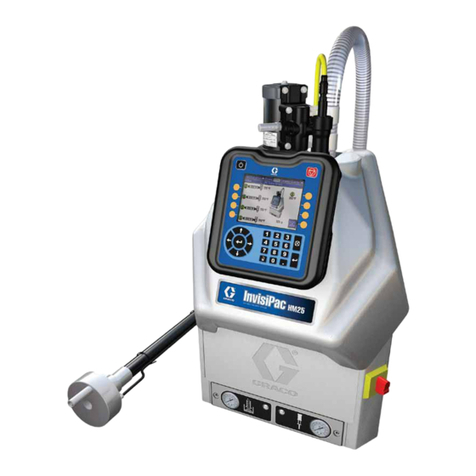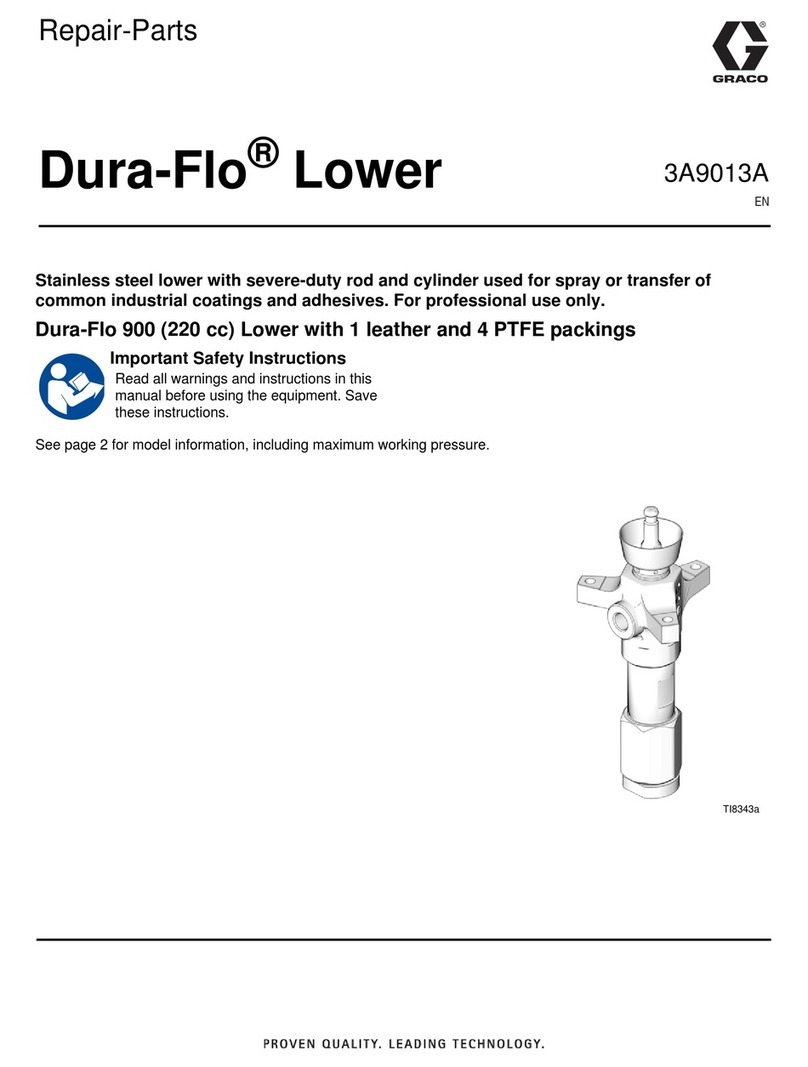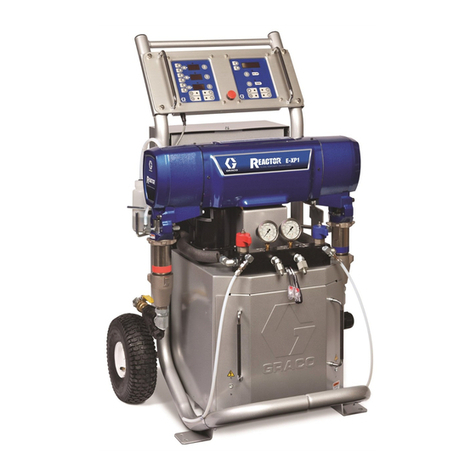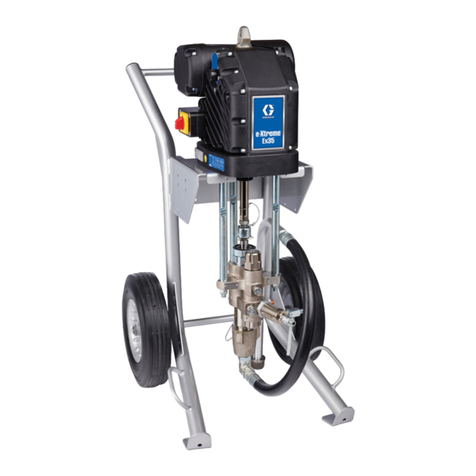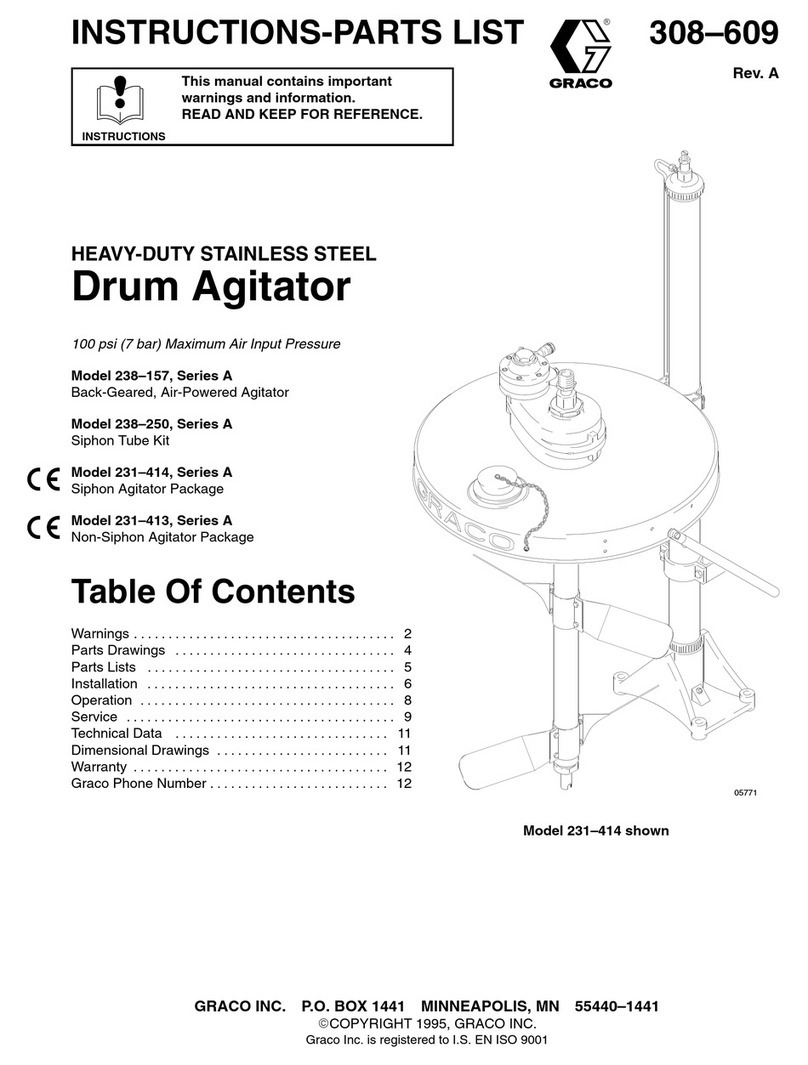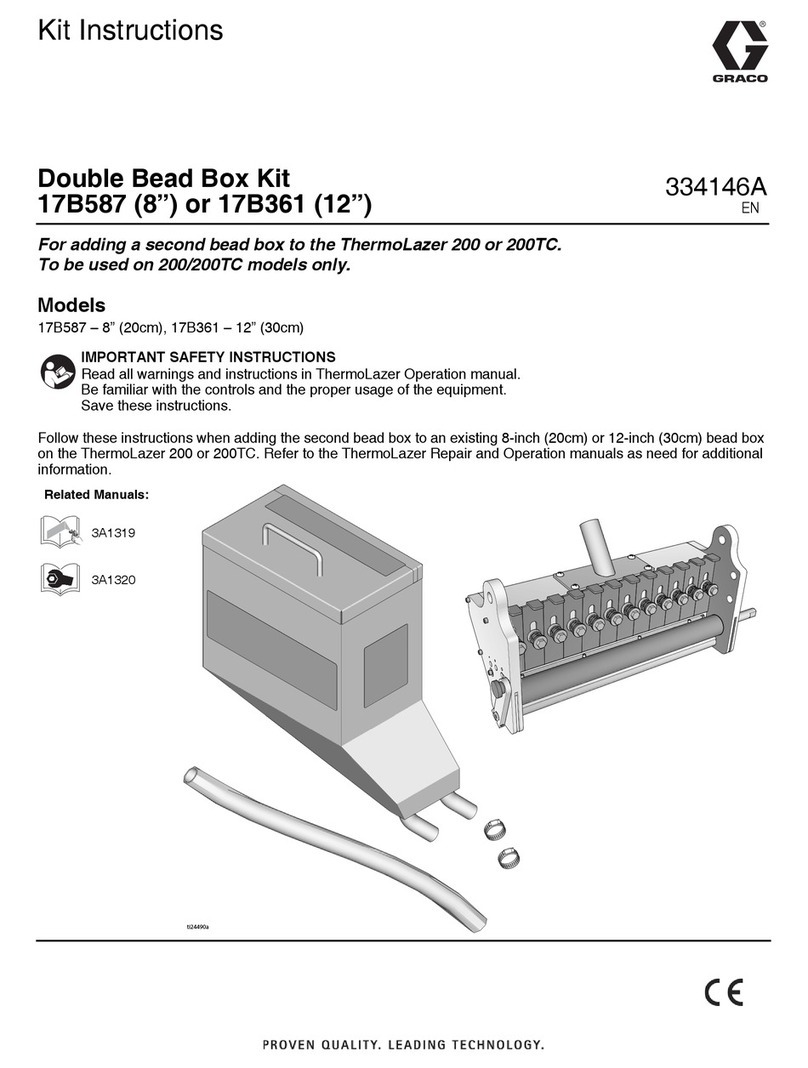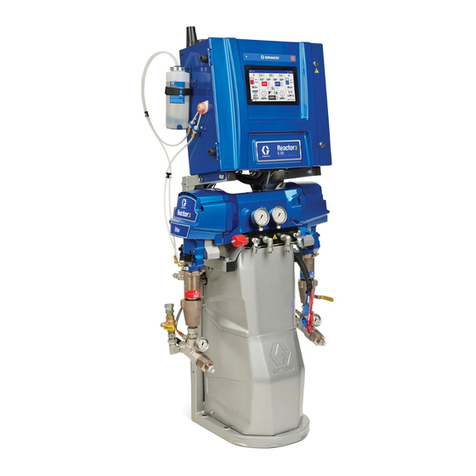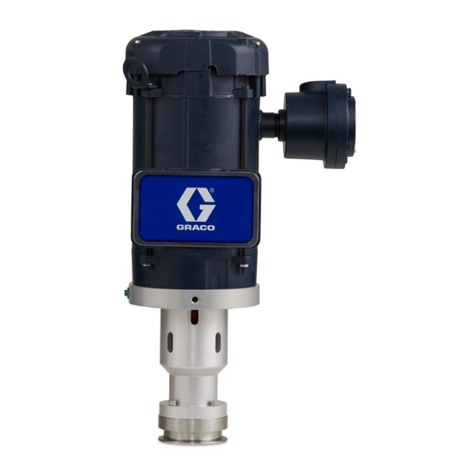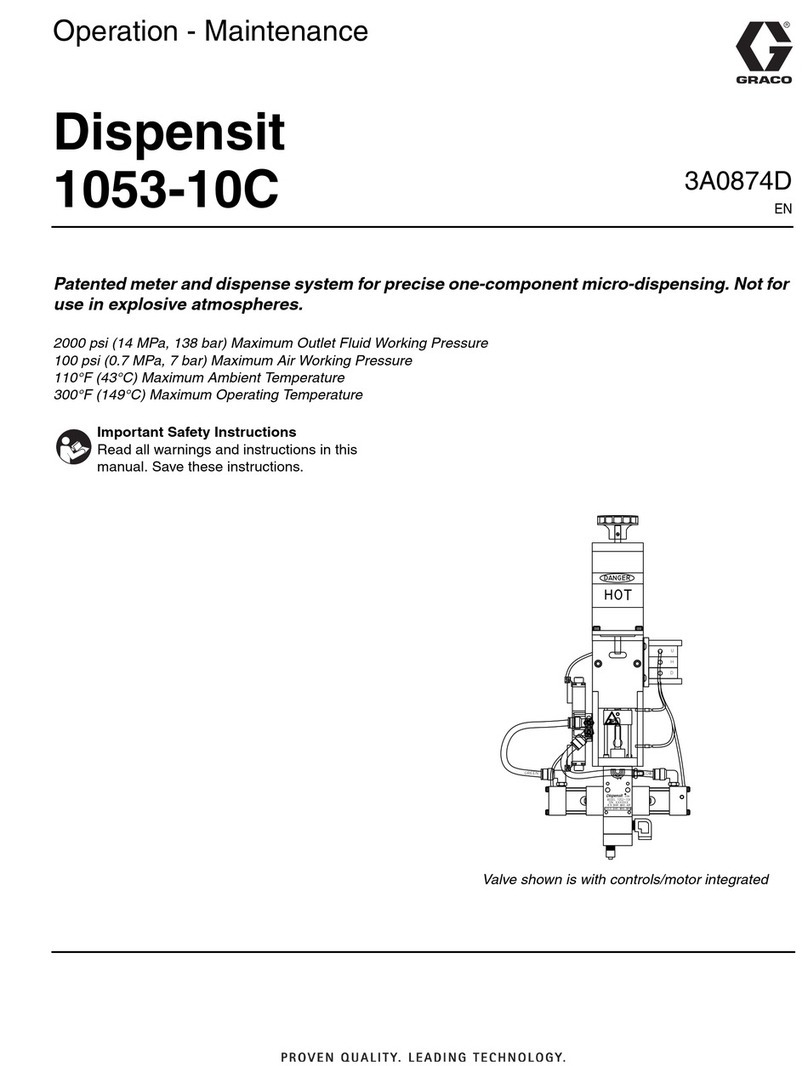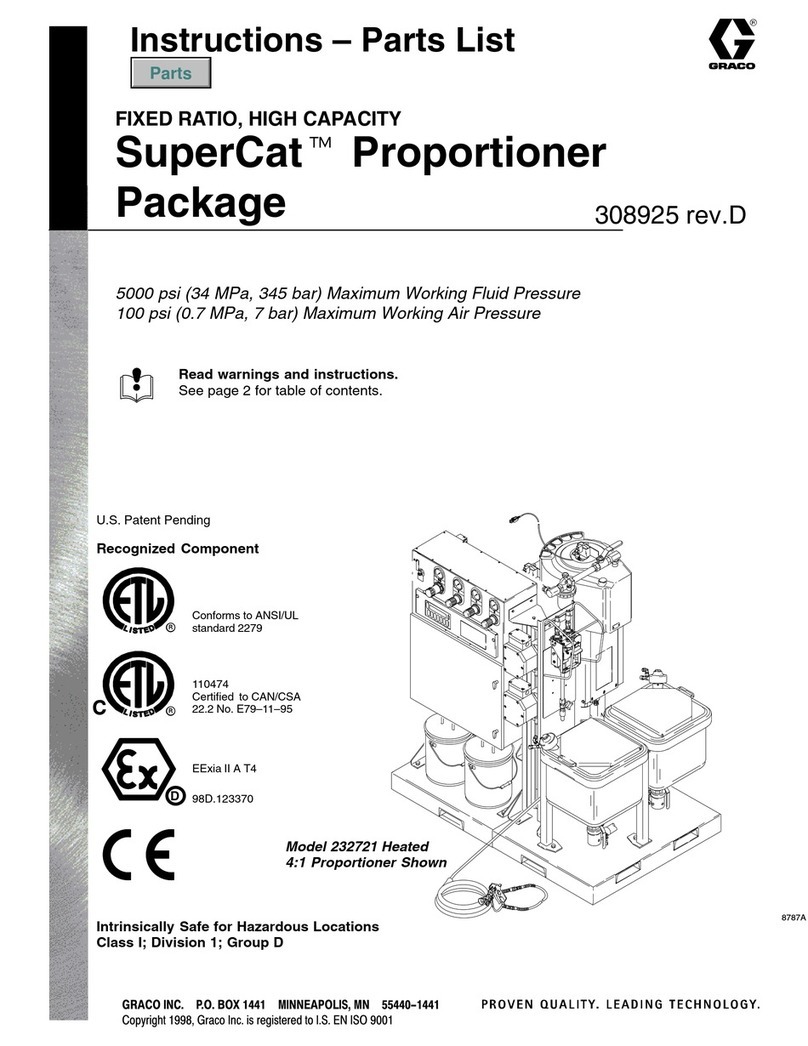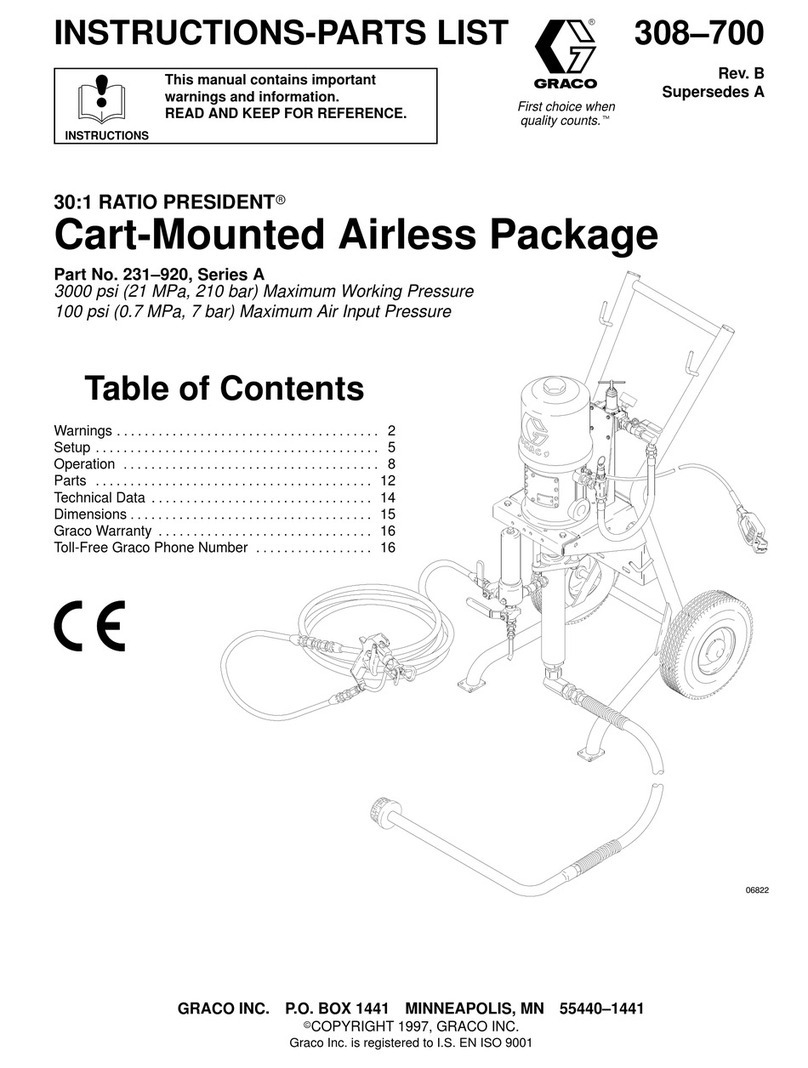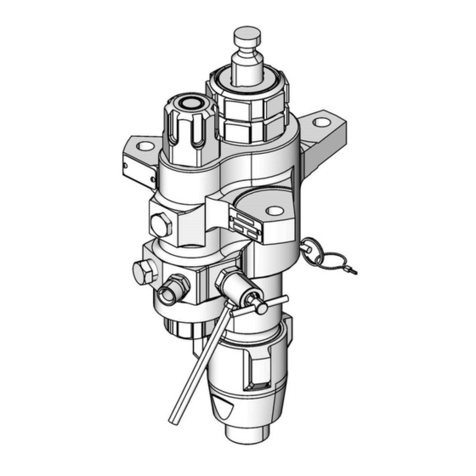
Installation
WARNING
FLAMMABLE
OR T
OXIC
V
APOR HAZARD
Provide fresh air ventilation to avoid the
buildup of flammable or toxic vapors. Do
not operate the spray gun unless ventila
-
tion fans are operating. Follow all nation
-
al, state, and local codes regarding air
exhaust velocity requirements.
NOTE:
D
Have the system binder (a collection of manuals
and diagrams in a three-ring binder
, supplied with
the system by Graco) available during installation.
D
Reference numbers and letters in parentheses in
this manual’
s text refer to the numbers and letters
in the illustrations.
D
Be sure all accessories are adequately sized and
pressure-rated to meet the system’s requirements.
D
Connect the fluid and air supply lines as instructed
in this manual and the system binder
.
The following instructions generally presume a stan
-
dard system using pressure tanks to supply the paint
components and solvent. See also
Optional Fluid
Supplies
, below
, for possible variations and their
ef
fect on the instructions.
Fluid Supply
The
following installation and operation instructions
generally presume a standard system, using pressure
tanks to supply the paint components and solvent.
The Optional Fluid Supplies
listed below are two
possible variations and their effect on the instructions.
Optional Fluid Supplies
NOTE:
The fluid supply must be free of pressure
spikes, which are commonly caused by a pump stroke
changeover
. If necessary
, install pressure regulators
or a surge tank on the fluid inlets to the mix manifold,
to reduce the fluid supply pressure. Contact Graco for
information on fluid pressure regulators.
Supplying Fluid Through Circulating Lines
If there is a central paint recirculating line in your shop,
the mix manifold can be connected to it instead of to
pressure tanks. Other than references to the pressure
tanks, operation is the same as described in this man
-
ual.
For maintenance and safety
, you must install a ball
valve between each supply line and the mix manifold.
Supplying Fluid Through Pail or Drum Pumps
Instead of pressure tanks, the mix manifold can be
supplied by pail or drum pumps. Operation is the
same, other than references to the pressure tanks.
Ground the System
(See Fig. 3)
WARNING
FIRE,
EXPLOSION, AND ELECTRIC
SHOCK HAZARD
T
o reduce the risk of fire, explosion, or
electric shock:
D
The mix manifold must be electrically
connected to a true earth ground; the
ground in the electrical system is not
sufficient.
D
All wires used for grounding must be
10 gauge minimum.
D
Refer to your local code for the requirements for
a “true earth ground” in your area.
D
Also read and follow the warnings on page 2.
NOTE:
A ground wire and clamp, part no 222–01
1, are
available from Graco.
Plural Component Mix Manifold
The mix manifold must be electrically connected to the
same true earth ground point as the controller enclo
-
sure. Dif
ferent ground points may cause current to flow
through the meter cables, causing incorrect signals.
The ground wire can be connected to the mix manifold
or to the mix manifold mounting surface if there is
electrical continuity between the mounting surface and
the mix manifold.
PrecisionMix System: Solenoid Enclosure
Connect a ground wire from the solenoid enclosure’
s
grounding lug to the same point as the mix manifold
mounting surface’
s ground wire.
Controller
Ground the controller as instructed in the controller
manual. The controller enclosure and the mix manifold
must be connected to the same true earth grounding
point.




















